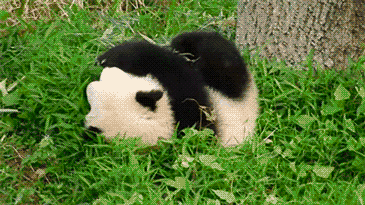Lesson Designs
By: Kate Dease
Climbing into Summarization
Reading to Learn

Rationale: Our goal is for readers to comprehend what they are reading. This will help students learn correctly and fluently. The next step is learning to read comprehensively in order to get the message of a text. Children must learn to read before they learn. Summarizing teaches students how to delete the information that is not needed and use a graphic organizer.
Materials:
Pencils (1 per child)
Paper (1 per child)
Highlighter (1 per child)
Sheets of paper for try folds
Sheets of lined paper for summarizing articles
Copies of the article “10 Panda Facts!” by National Geographic Kids
Copies of the article “Giant Pandas” by National Geographic
Rubric for grading summaries
Procedures:
1. Today we will be learning how to summarize the text in an article. Summarization is when you condense the information down to only what is important by deleting all of the less important repeated information. We will practice how to do this with two articles. We will focus on what the main idea is, what facts support the main idea, and what information we can remove to make our understanding more clear.
2. I am going to pass around a stack of paper and I want everyone to get one sheet. Watch me as I model how to fold this paper into 3 pieces. I am making a tri fold. First, take the paper and fold it over 1/3 of the page. Then with the remaining part of the paper, fold it behind the two parts. Your paper should be split into 3 pieces. These sections should be called title page, two middle pages, and back page. Now your turn to try, I will come around the room to help if you need me.
3. Now that we have made our tri-fold, let’s begin talking about why we made our sheets of paper like this. We will be using this paper as a study card to help us make a summary. First we need to know the steps to make a summary:
1 Picking out the most important detail / underlining or highlighting the details
2 Finding the repeated details and crossing them out
3 Organizing the information we find In step one.
Please write these steps on the first page of your trifold (Have the students recall the steps as you have them write the steps down).
1. To continue our learning on animals, I am going to pass out an article called, “Giant Panda.” Everyone should get a copy of this article. This article is about the interesting facts of Giant Pandas. It looks at their size, behavior, size, and location. “How do you think pandas will be different than other mammals?” Now, we need to pick out the information that is not important. For example, the sentence “improved conservation efforts and better survey methods show an increase in panda population.” Let’s cross this out. It does not give us any information about the panda. We also need to identify important pieces of information. When the article says, “Pandas often seen eating in a relaxed sitting posture.” Let’s write this information on the left middle page if our trifold. We know our article is about pandas, so our topic sentence should be interesting facts on Pandas. Once we have written that we continue to write our summary using the rest of the article. We make sure to put it in our own words. The two middle pages will be for writing the main ideas on the left side, and supporting details on the right side.
Two main questions:
What is it about?
What is the main point?
2. Now lets practice our summarizing skills reading on our own. Let’s look at some vocabulary words. What is a mammal? Mammals are warm blooded animals with hair that feed their young with milk. We are mammals, so are dogs, and even pandas. Another word is habitat. Habitat is where someone lives. Pandas live in a remote mountainous area near China. Now we can incorporate these words in our summarizing
3. Everyone’s trifold’s look amazing so far. Once you finish the article, and gather the main ideas and supporting details, write down a one paragraph summary on the article.
Assessment: I will review every student’s paragraph and tri-fold.
I will use scoring rubric:
Did student write topic sentence
3-5 sentence explaining article
Select key information
Choose correct topic
Panda questions:
Where do most pandas live?
What is the typical panda behavior?
What type of food do they eat?
References:
https://www.nationalgeographic.com/animals/mammals/g/giant-panda/
https://www.natgeokids.com/za/discover/animals/general-animals/ten-panda-facts/#!/register